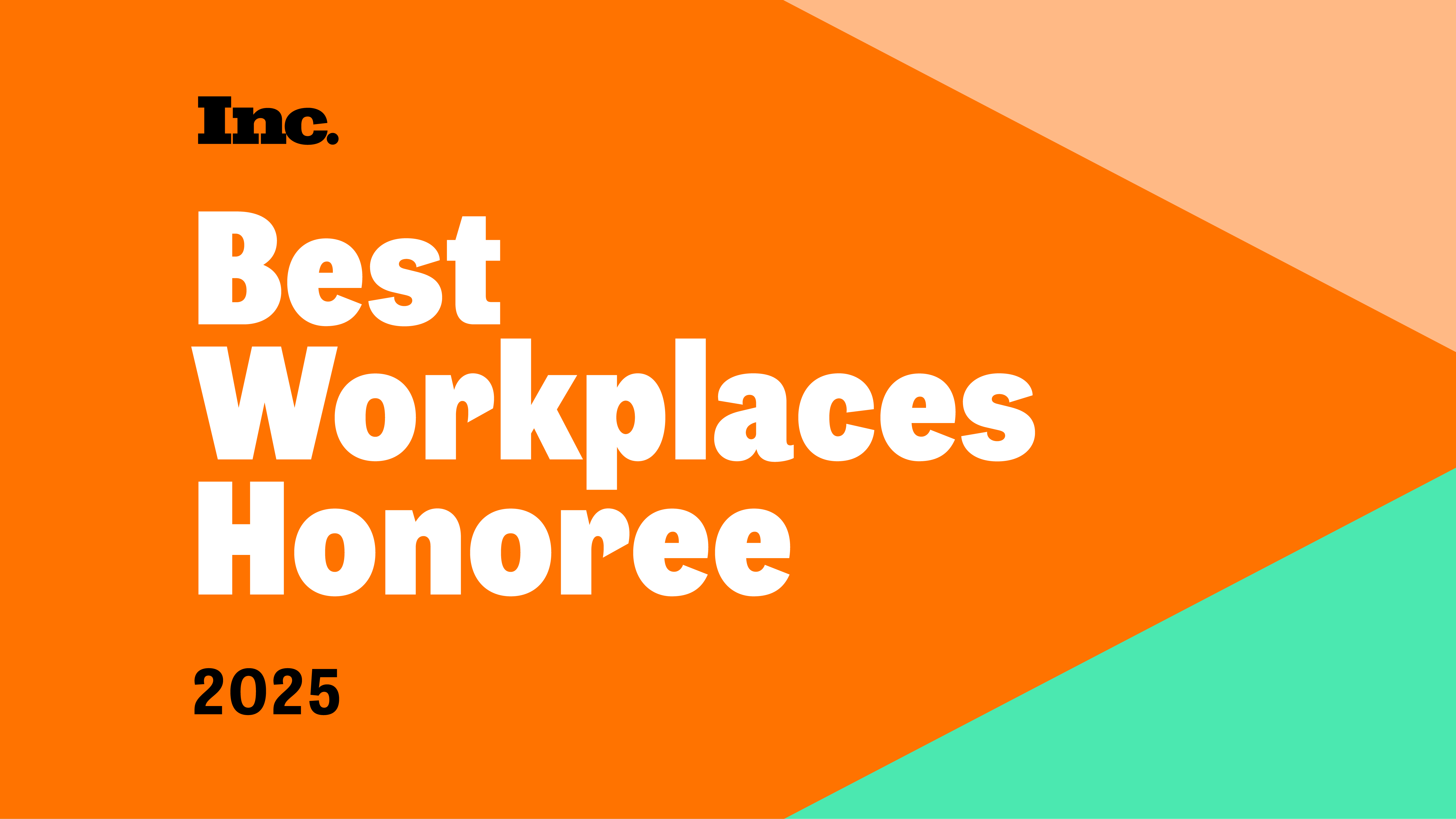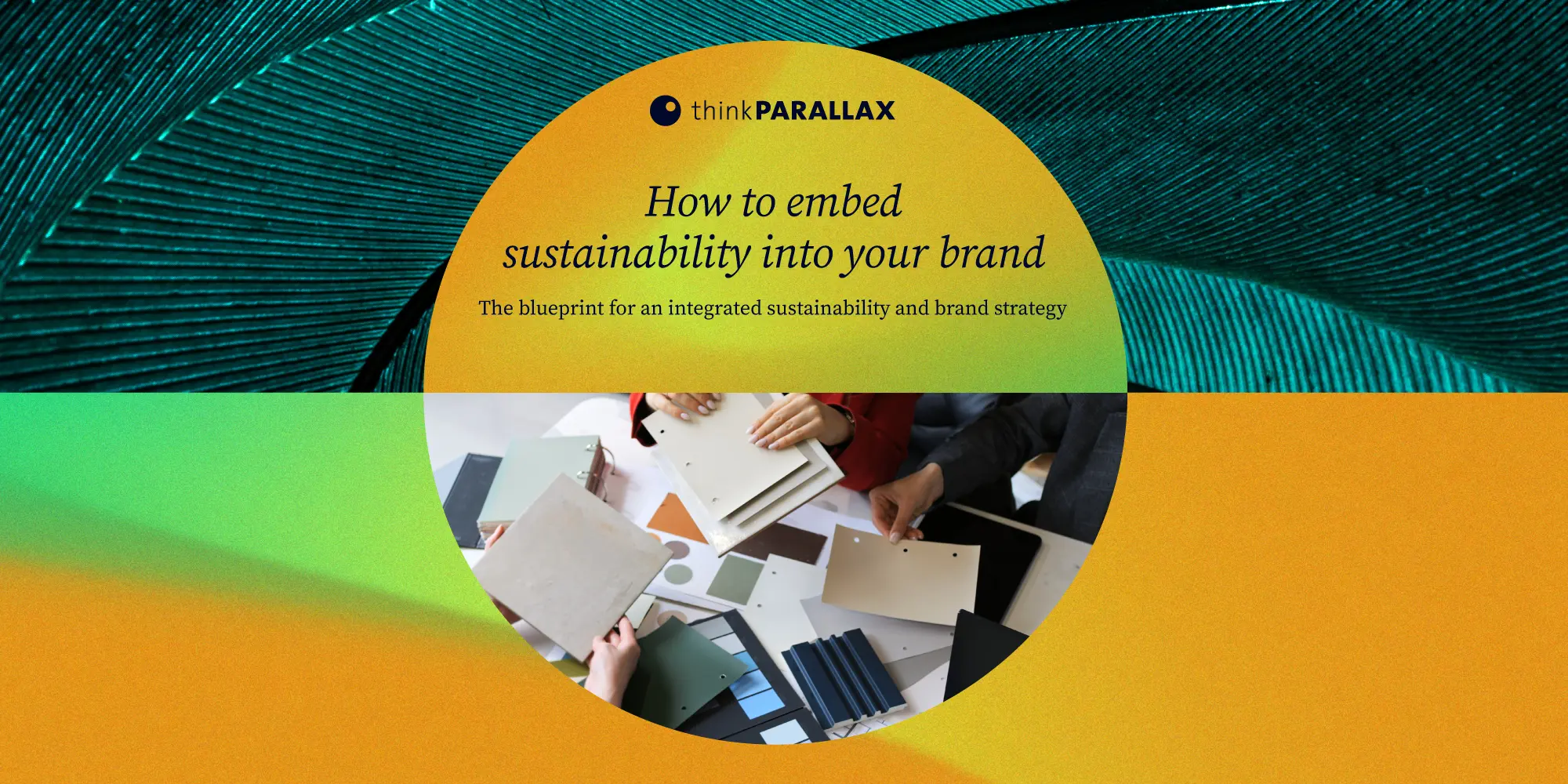thinkPARALLAX has been named to Inc.’s 2025 Best Workplaces list, joining 514 companies recognized for building exceptional workplace cultures. This year’s list, featured on Inc.com, is the result of comprehensive measurement and evaluation of American companies that have excelled in creating exceptional workplaces and company cultures — whether in-person or remote.
We’re thrilled by this recognition, but the evaluation process itself revealed insights that go far beyond typical workplace culture conversations. Most discussions about “best workplaces” center on perks and policies: unlimited PTO, flexible schedules, the occasional office dog. But after months of rigorous assessment — including detailed employee surveys, benefits audits, and extensive review — we discovered this recognition highlights something more fundamental about what makes a workplace effective, especially in the demanding field of sustainability work.
The real culture test: How you handle the hard stuff
The past few years have been a masterclass in workplace resilience. We’ve navigated a global pandemic, economic uncertainty, and a rapidly shifting landscape around sustainability work itself. Through it all, the thing that’s mattered most isn’t our benefits package or our flexible work policy — it’s how we’ve approached the inevitable challenges that come with building something meaningful.
“Being recognized as a Best Workplace isn’t about having all the answers,” says thinkPARALLAX CEO Jonathan Hanwit. “It’s about creating a culture, and developing benefits that align, where people feel safe to bring their whole selves to work, especially when the work itself is hard. Sustainability communications and strategy isn’t just a job — it’s about helping organizations navigate one of the most complex challenges of our time. That requires intellectual honesty and the kind of trust that only comes from consistently showing up for each other.”
This perspective aligns with how Inc. views exceptional workplace culture.
“Inc.'s Best Workplaces program celebrates the exceptional organizations whose workplace cultures address their employees’ welfare and needs in meaningful ways,” says Bonny Ghosh, editorial director at Inc. “As companies expand and adapt to changing economic forces, maintaining such a culture is no small feat. Yet these honorees have not only achieved it — they continue to elevate the employee experience through thoughtful benefits, engagement, and a deep commitment to their teams.”
The sustainability space attracts people who care deeply about making a difference. That passion is our superpower, but it can also be our vulnerability. When the stakes feel existential — and let's be honest, they often do in climate work — it’s easy for workplace culture to become either overly intense or superficially optimistic. Neither approach serves anyone well.
What “embracing parallax” really means
Our core value is “embracing parallax” — the idea that multiple perspectives make us stronger. But living that value daily means more than just hiring diverse talent or encouraging different viewpoints in meetings. It means building systems that actually support cognitive diversity, especially when perspectives clash.
Some of our best work has come from productive disagreement. When our strategy team pushes back on a communications approach, or when our communications team questions a strategic assumption, that friction often leads to breakthrough thinking. But productive disagreement requires psychological safety, clear processes for decision-making, and the emotional intelligence to separate ideas from egos.
The Inc. evaluation process forced us to examine how well we’re actually doing this work, not just talking about it. Employee surveys don’t lie, and the feedback helped us see both our strengths and our blind spots more clearly.
The business case for genuine care
Here’s something that might surprise people: focusing intensely on employee experience isn’t just the right thing to do — it’s also a competitive advantage in sustainability work. Our clients are dealing with complex, long-term challenges that require deep thinking, creative problem-solving, and the ability to communicate nuanced ideas clearly. That kind of work demands people who are engaged, energized, and mentally present.
When team members feel genuinely supported — not just with good benefits, but with meaningful work, growth opportunities, and the flexibility to integrate their personal and professional lives — they bring their best thinking to client challenges. They’re more willing to take creative risks, more resilient when projects get complicated and more effective at building the long-term relationships that drive real impact.
That’s why we developed our PARALLAXploration program, a company-funded travel program aimed at getting our team out of the office and into the world, as well as a generous stipend to support professional growth.
What we’re still learning
Making this list feels like recognition of progress, not perfection. We’re still figuring out how to balance the urgency of climate work with sustainable work practices. We’re still learning how to give feedback that’s both honest and supportive. We’re still experimenting with ways to maintain connection and culture as we grow.
The truth is, being named a Best Workplace doesn’t mean we’ve solved workplace culture — it means we’re committed to the ongoing work of creating an environment where people can do their best work while living full lives. In sustainability communications, where the challenges we’re tackling can feel overwhelming, that commitment isn’t just nice to have. It’s essential.
Beyond the award: What really matters
Awards are validating, but they’re not the point. The point is building the kind of workplace that can tackle hard problems with both intellectual rigor and genuine care for the people doing the work. The point is proving that you don't have to choose between meaningful impact and sustainable work practices.
As we continue growing and taking on increasingly complex client challenges, this recognition reminds us to keep investing in the foundation that makes everything else possible: a culture where people feel seen, supported, and genuinely excited about the work they’re doing together.
That's worth celebrating — and, more importantly, it’s worth protecting as we move forward.






